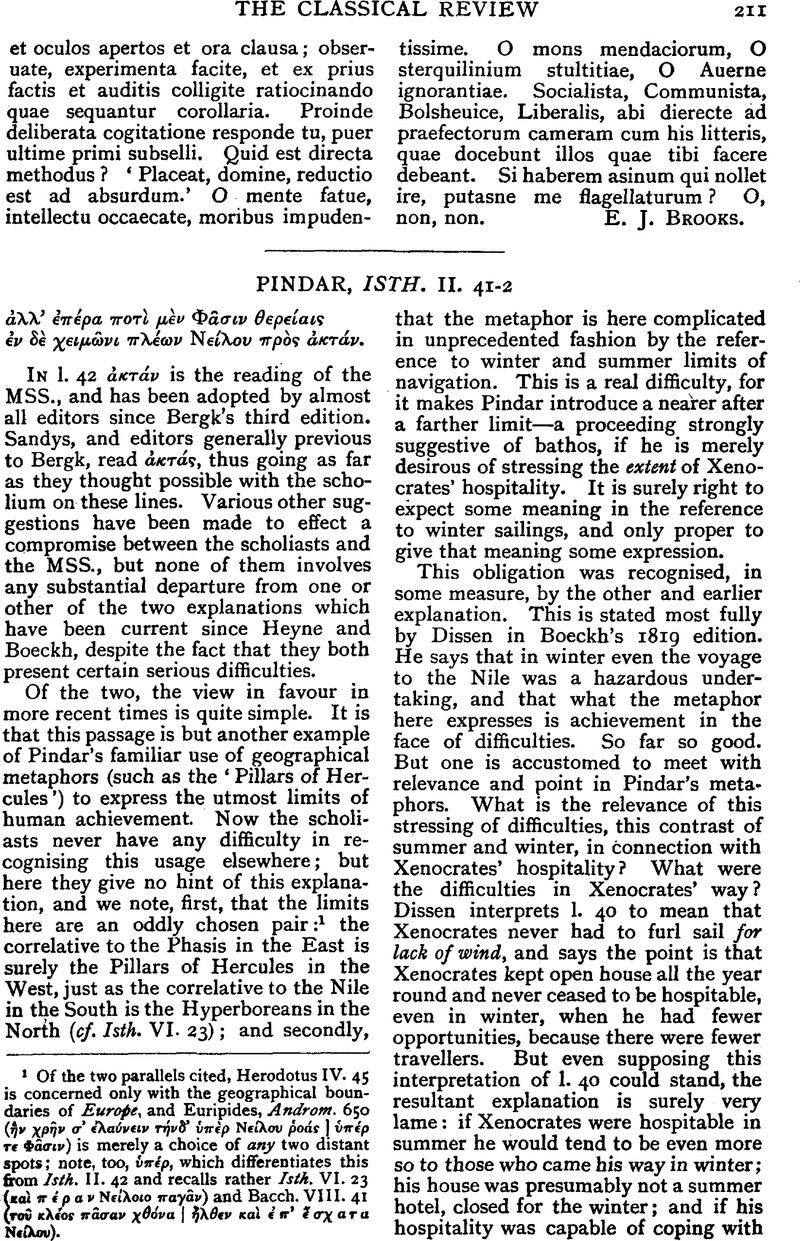No CrossRef data available.

page 211 note 1 Of the two parallels cited, Herodotus IV. 45 is concerned only with the geographical boundaries of Europe, and Euripides, Androm. 650 (![]() ) is merely a choice of any two distant spots; note, too, ὑπρ, which differentiates this from Isth. II. 42 and recalls rather Isth. VI. 23 (
) is merely a choice of any two distant spots; note, too, ὑπρ, which differentiates this from Isth. II. 42 and recalls rather Isth. VI. 23 (![]() ) and Bacch. VIII. 41(
) and Bacch. VIII. 41(![]() ).
).
page 212 note 1 Schröder notes that MS. D has ῥῃσεις for ῥσεις: but as B has ῥσεις, and both MSS. have ῥσις seven words later, ῥῄσεις is no foundation on which to build conjectures.
page 212 note 2 Whence κτς came into B is doubtful; it may have been an alteration both in the text and in the scholium for the difficult αὐγς—from which indeed it does not greatly differ palaeo-graphically; or (to reverse a suggestion of Schröder's) it may have crept into the text from a gloss, κτῖνς, on αὐγς.
page 213 note 1 For an interesting parallel to this cf. A. B. Cook,Zeus I., p. 361: a coin of Hadrian, minted at Alexandria, whereon Zeus is portrayed with (amongst other attributes) the rays of Helios and the cornucopiae of the Nile.